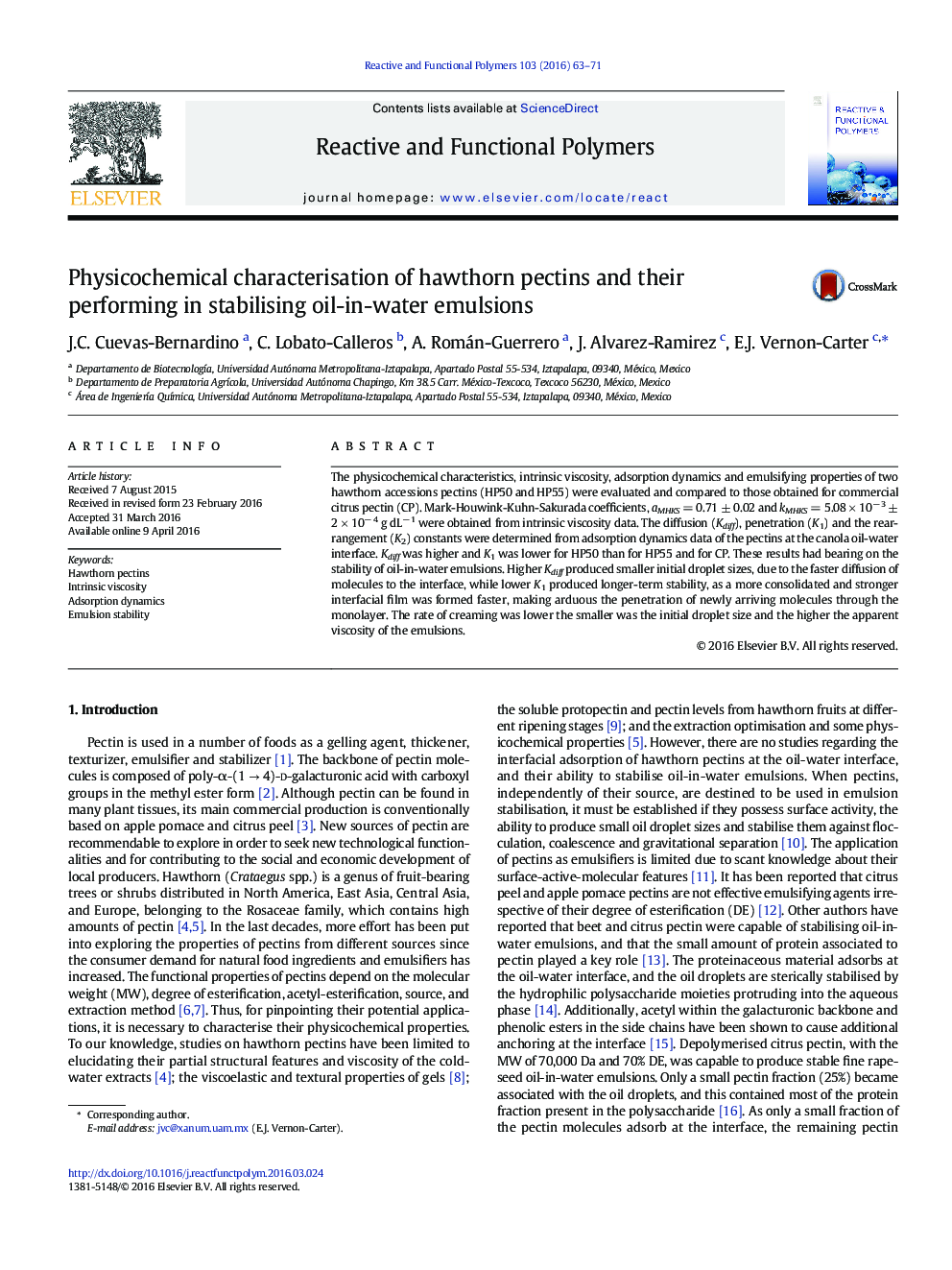| Article ID | Journal | Published Year | Pages | File Type |
|---|---|---|---|---|
| 5209422 | Reactive and Functional Polymers | 2016 | 9 Pages |
Abstract
The physicochemical characteristics, intrinsic viscosity, adsorption dynamics and emulsifying properties of two hawthorn accessions pectins (HP50 and HP55) were evaluated and compared to those obtained for commercial citrus pectin (CP). Mark-Houwink-Kuhn-Sakurada coefficients, aMHKS = 0.71 ± 0.02 and kMHKS = 5.08 Ã 10â 3 ± 2 Ã 10â 4 g dLâ 1 were obtained from intrinsic viscosity data. The diffusion (Kdiff), penetration (K1) and the rearrangement (K2) constants were determined from adsorption dynamics data of the pectins at the canola oil-water interface. Kdiff was higher and K1 was lower for HP50 than for HP55 and for CP. These results had bearing on the stability of oil-in-water emulsions. Higher Kdiff produced smaller initial droplet sizes, due to the faster diffusion of molecules to the interface, while lower K1 produced longer-term stability, as a more consolidated and stronger interfacial film was formed faster, making arduous the penetration of newly arriving molecules through the monolayer. The rate of creaming was lower the smaller was the initial droplet size and the higher the apparent viscosity of the emulsions.
Related Topics
Physical Sciences and Engineering
Chemistry
Organic Chemistry
Authors
J.C. Cuevas-Bernardino, C. Lobato-Calleros, A. Román-Guerrero, J. Alvarez-Ramirez, E.J. Vernon-Carter,
